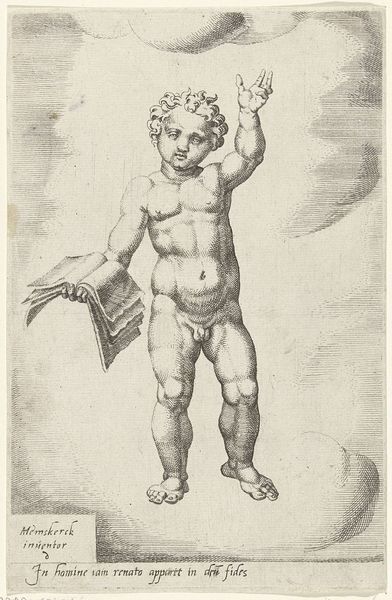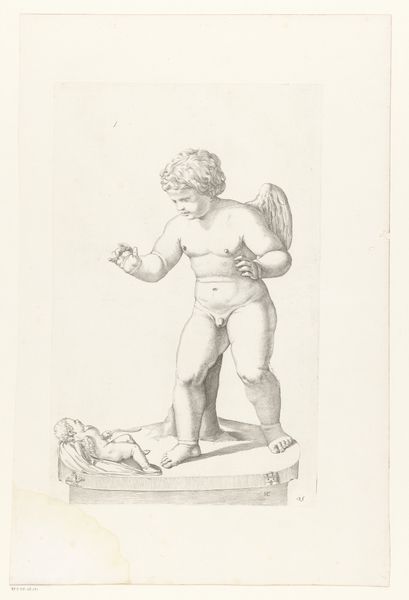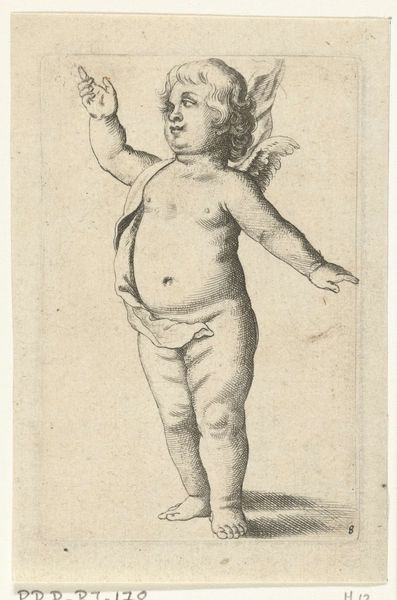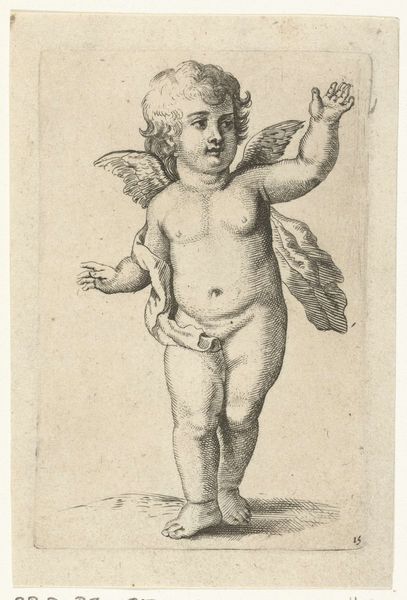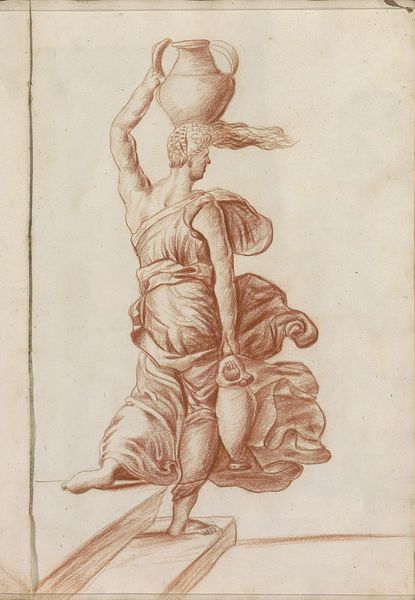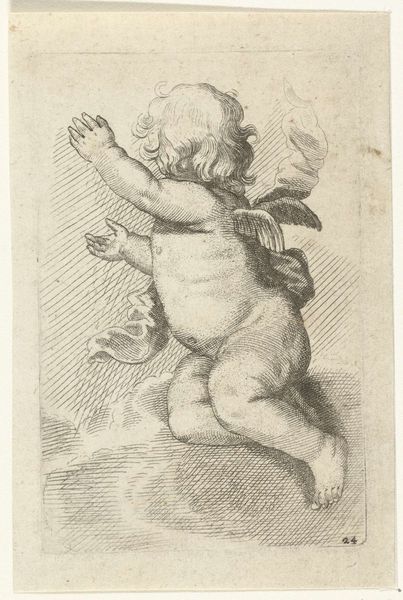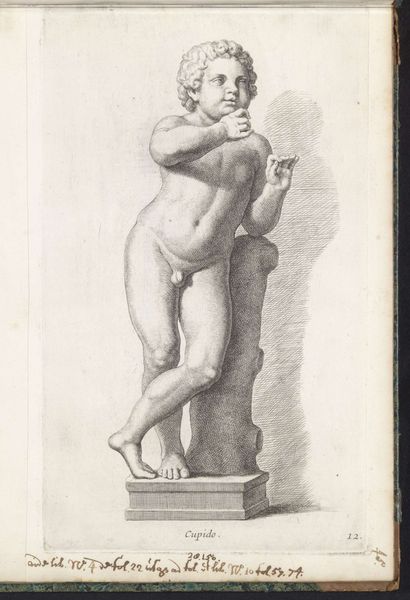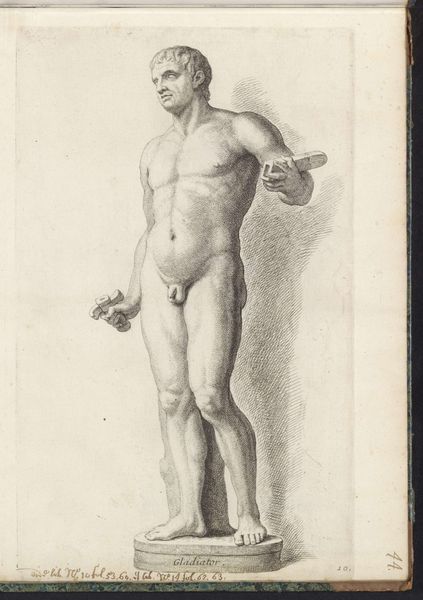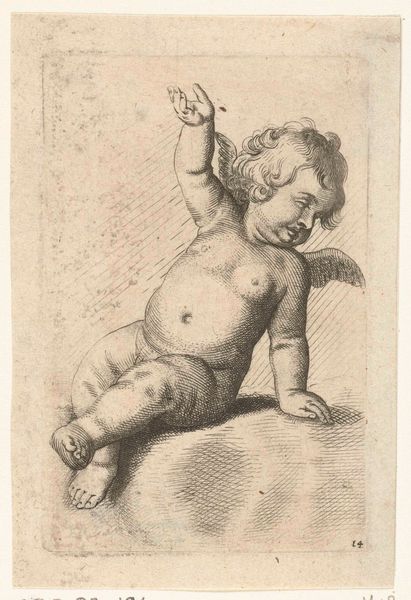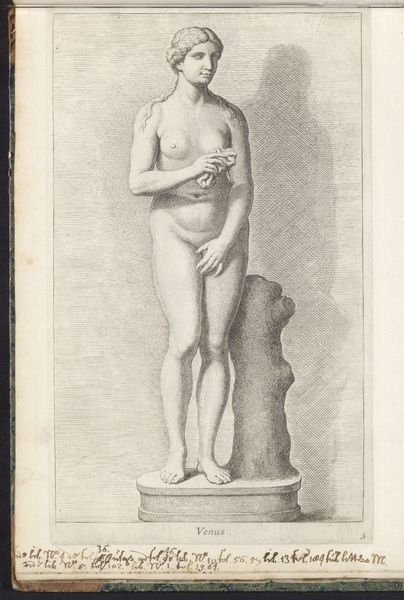
#
imaginative character sketch
#
toned paper
#
light pencil work
#
pencil sketch
#
personal sketchbook
#
coloured pencil
#
sketchbook drawing
#
portrait drawing
#
watercolour illustration
#
sketchbook art
Dimensions: height 325 mm, width 200 mm
Copyright: Rijks Museum: Open Domain
Curator: Here we have "Sculpture of Cupid," a drawing made between 1646 and 1670, by Hubert Quellinus. Editor: My immediate impression is a sense of dynamic, contained energy. Even within the sketch's defined lines and sepia tones, there's something about Cupid's upward reach and the implied narrative that captures my attention. Curator: Indeed, note the balanced asymmetry. Quellinus masterfully employs light pencil work to define the cherubic figure against the toned paper. The deliberate lack of a fully realized background throws the focus on line and form, emphasizing the three-dimensionality. The composition feels intentionally restrained. Editor: Yet, the pose speaks volumes. The raised arm, the slightly tilted head...it evokes questions of power, desire, and perhaps even a commentary on the objectification of innocence prevalent in the artistic representations of the era. Is this an aspirational Cupid, reaching for influence, or is he already implicated in a system that exploits youthful ideals? Curator: That's a stimulating reading. Though it appears to be a preparatory sketch, observe how Quellinus still pays meticulous attention to musculature and proportion. The use of colored pencil adds subtle depth. These aesthetic elements cannot be ignored. Editor: I agree; there’s a clear appreciation for classical form. However, it's crucial to ask whose ideals are being perpetuated here. The Cupid myth, often sanitized, is rooted in complex dynamics. By focusing solely on form, we risk overlooking the socio-political nuances it represents. It risks replicating established patterns that glorify particular types of bodies. Curator: The precision certainly is something to behold, regardless. Quellinus used light pencil work to sculpt the young God; one might wonder about how such detail and form impacted its cultural consumption at the time. Editor: Ultimately, pieces like "Sculpture of Cupid" remind us of art's function both to embody and reinforce cultural perspectives. Our engagement should foster both appreciation for formal qualities and critical examination of historical contexts.
Comments
No comments
Be the first to comment and join the conversation on the ultimate creative platform.
